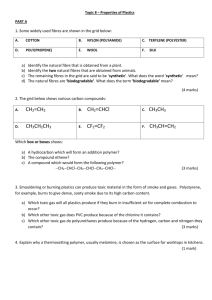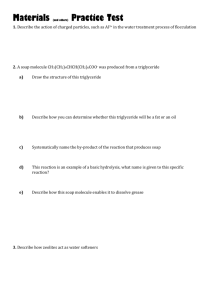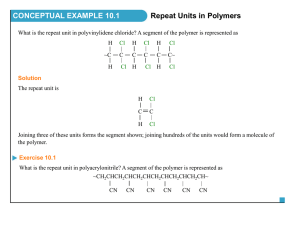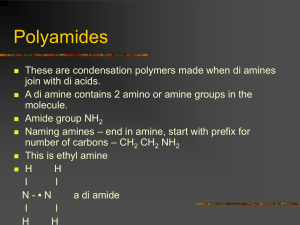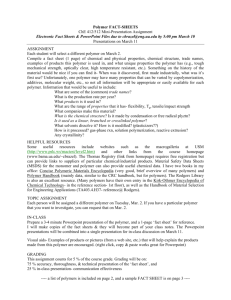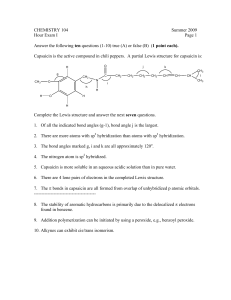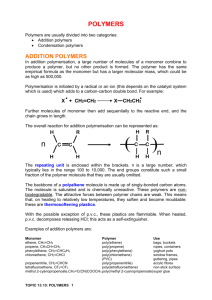H/W 3.1 – Properties of Plastics PART A 1. Some widely used fibres
advertisement
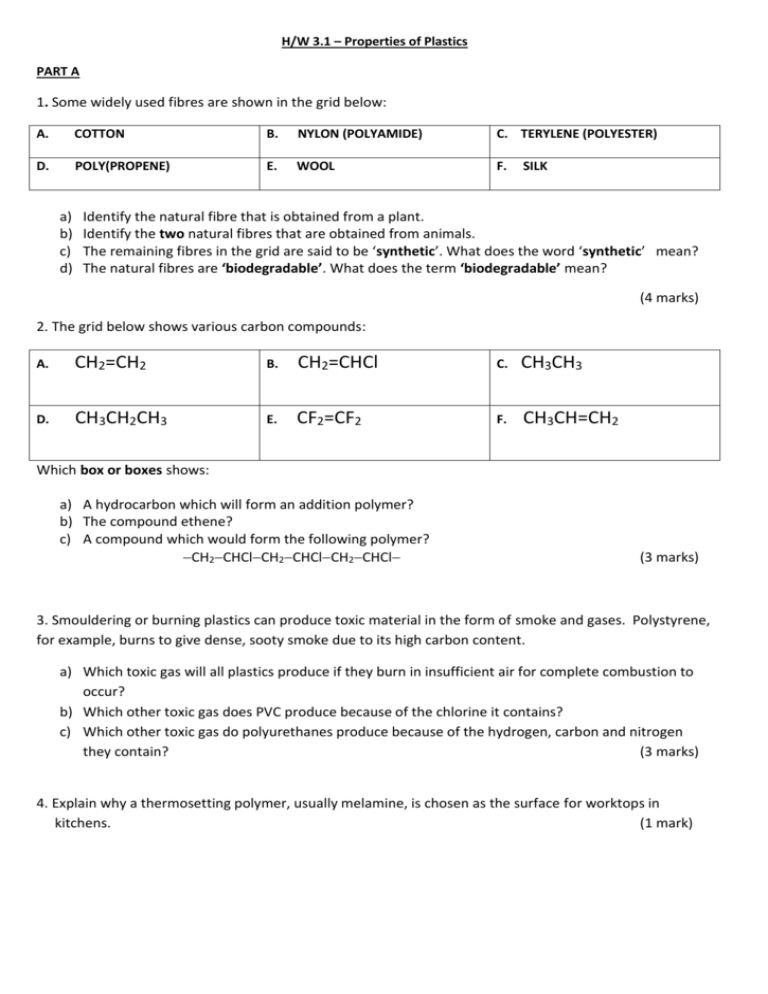
H/W 3.1 – Properties of Plastics PART A 1. Some widely used fibres are shown in the grid below: A. COTTON B. NYLON (POLYAMIDE) C. TERYLENE (POLYESTER) D. POLY(PROPENE) E. WOOL F. a) b) c) d) SILK Identify the natural fibre that is obtained from a plant. Identify the two natural fibres that are obtained from animals. The remaining fibres in the grid are said to be ‘synthetic’. What does the word ‘synthetic’ mean? The natural fibres are ‘biodegradable’. What does the term ‘biodegradable’ mean? (4 marks) 2. The grid below shows various carbon compounds: A. CH2=CH2 B. CH2=CHCl C. CH3CH3 D. CH3CH2CH3 E. CF2=CF2 F. CH3CH=CH2 Which box or boxes shows: a) A hydrocarbon which will form an addition polymer? b) The compound ethene? c) A compound which would form the following polymer? CH2CHClCH2CHClCH2CHCl (3 marks) 3. Smouldering or burning plastics can produce toxic material in the form of smoke and gases. Polystyrene, for example, burns to give dense, sooty smoke due to its high carbon content. a) Which toxic gas will all plastics produce if they burn in insufficient air for complete combustion to occur? b) Which other toxic gas does PVC produce because of the chlorine it contains? c) Which other toxic gas do polyurethanes produce because of the hydrogen, carbon and nitrogen they contain? (3 marks) 4. Explain why a thermosetting polymer, usually melamine, is chosen as the surface for worktops in kitchens. (1 mark) 5. A new polymer has the following structure: Cl F Cl F Cl F C C C C C C H CH3 H CH3 H CH3 a) Draw the full structural formula for the repeat unit in the polymer. b) Draw the full structural formula for the monomer from which the polymer is made. (2 marks) 6. The monomer ethene can be polymerised to give the polymer poly(ethene). a) Name the polymer produced from the monomer tetrafluoroethene. b) Name the monomer used to produce the polymer poly (methyl – 2 – methyl – propenoate). (2 marks) TOTAL = 15 MARKS
